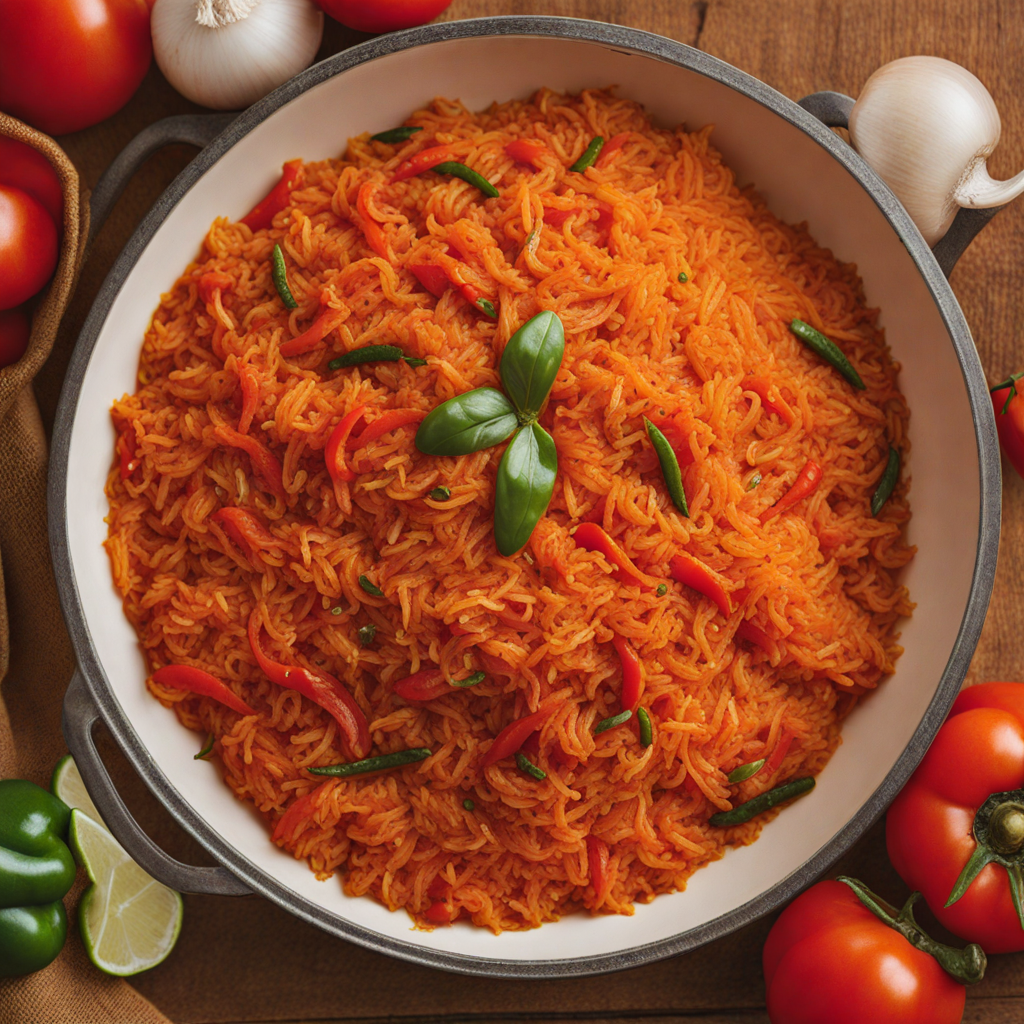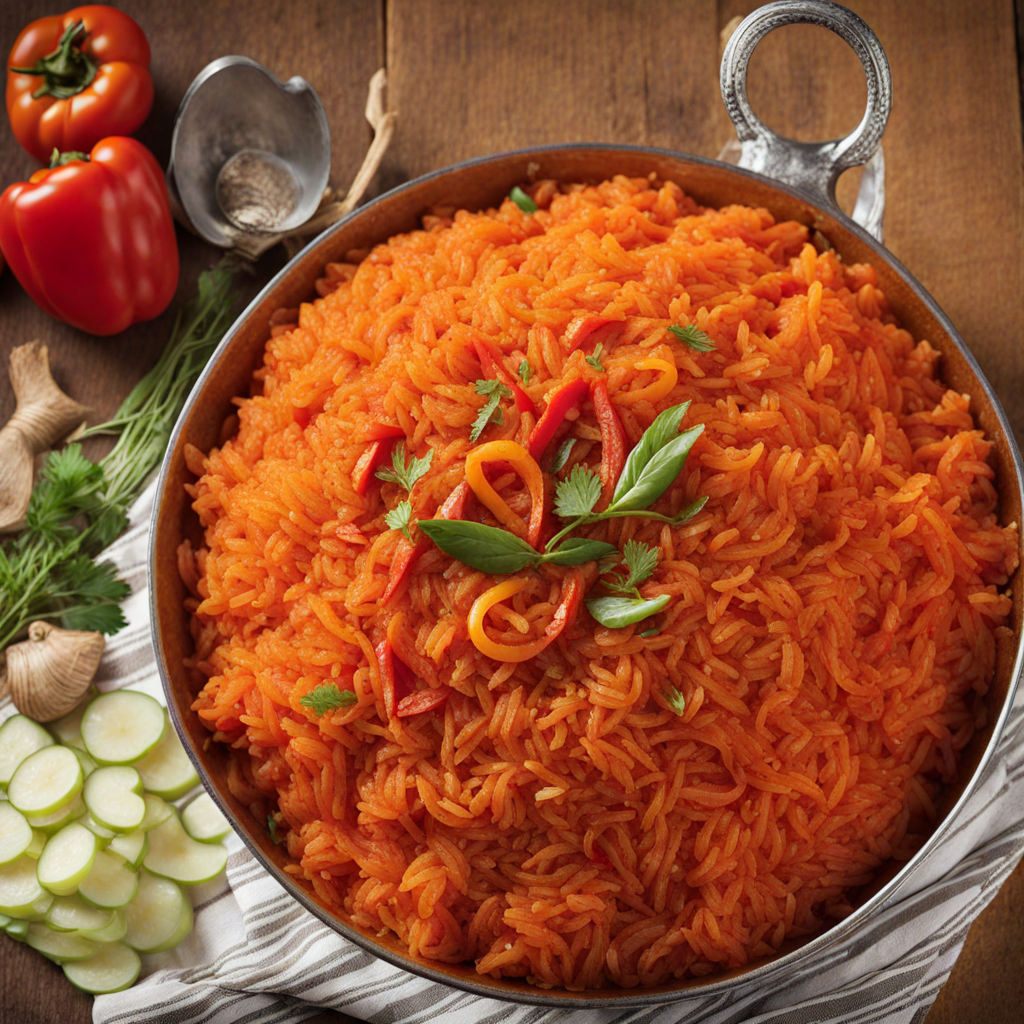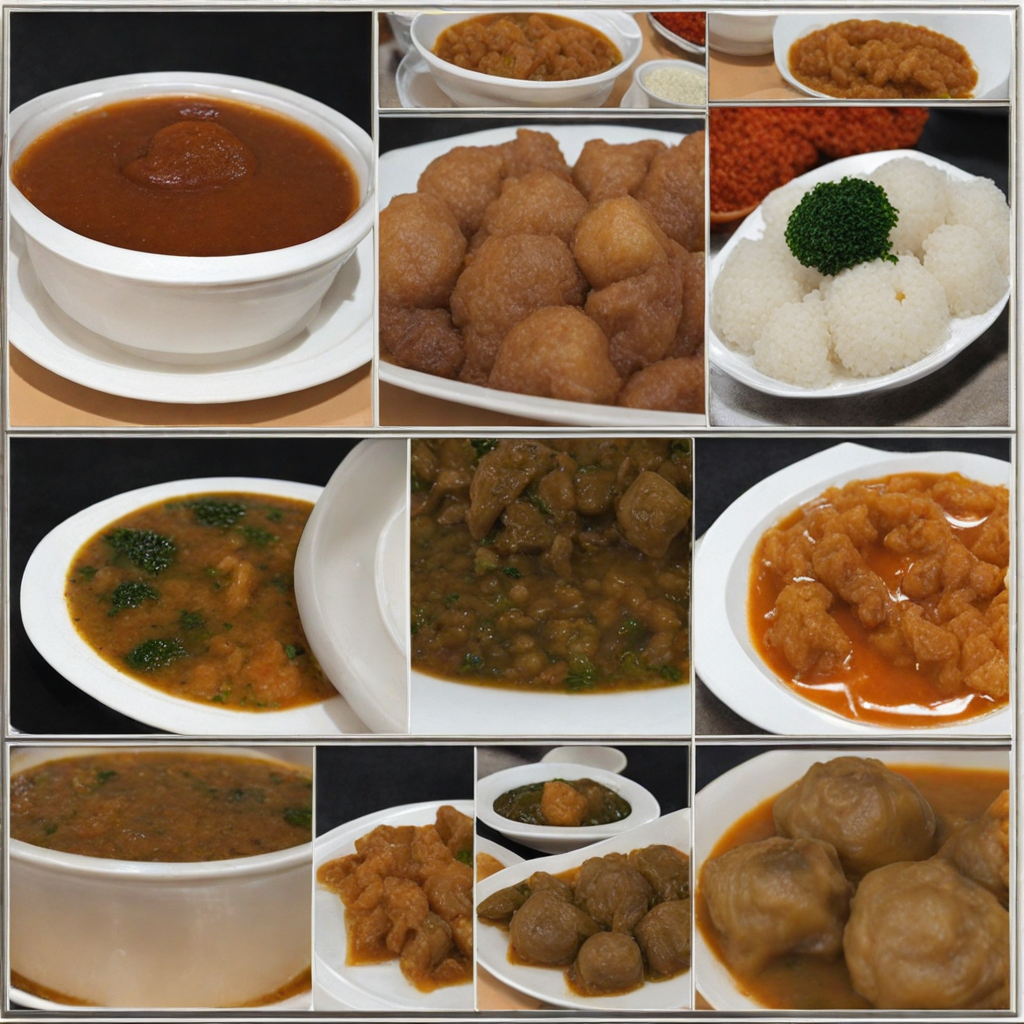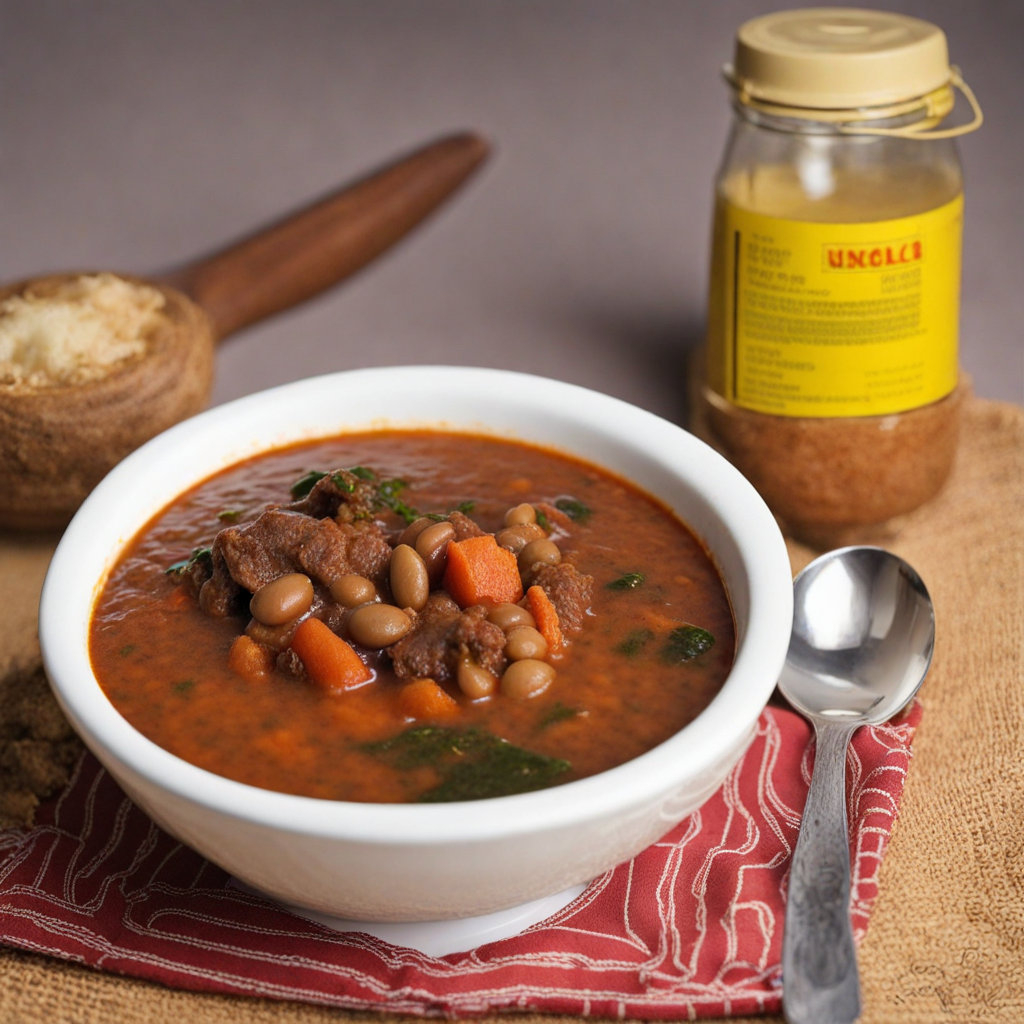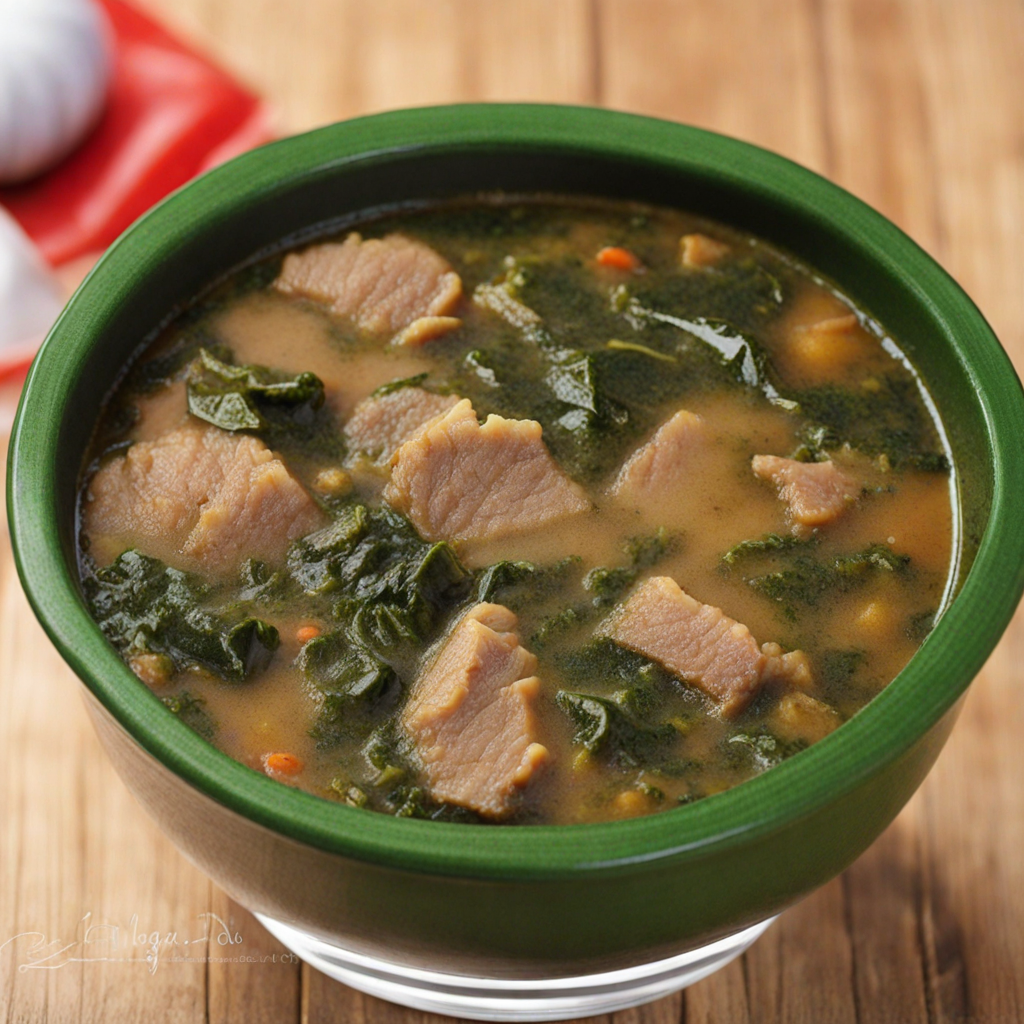Jollof Rice
Jollof Rice is a beloved West African dish, particularly popular in Nigeria, where it holds a special place in the hearts of many. This one-pot dish is characterized by its vibrant red hue, which comes from the tomatoes and peppers used in its preparation. Jollof Rice is not just a meal; it is a cultural phenomenon that often serves as the centerpiece for celebrations and gatherings, symbolizing togetherness and festivity. The history of Jollof Rice can be traced back to the Senegambian region, specifically the Wolof people, where the dish originated as "Benachin," meaning "one pot." Over time, it spread across West Africa, evolving into various regional variations. In Nigeria, Jollof Rice is often a source of friendly rivalry, especially between the different ethnic groups and, notably, between Nigeria and Ghana, each claiming superiority in their version of the dish. These variations may include different spices, cooking techniques, and accompanying side dishes, but the essence of Jollof Rice remains consistent: a flavorful, aromatic rice that acts as a canvas for a medley of tastes. The flavor profile of Jollof Rice is rich and complex, combining savory, spicy, and slightly sweet elements. The base flavor is derived from a blend of tomatoes, onions, and bell peppers, which are pureed and sautéed to create a fragrant sauce. This sauce is then infused with a variety of spices, including thyme, bay leaves, and sometimes curry powder, adding
How It Became This Dish
The Rich History of Jollof Rice: A Culinary Icon of Nigeria Jollof Rice is more than just a dish; it is a vibrant expression of culture, community, and history, particularly within West Africa, with Nigeria being one of its most ardent proponents. This one-pot rice dish, characterized by its rich tomato base, savory spices, and often accompanied by chicken, fish, or vegetables, has captured the hearts and palates of many, both in Nigeria and beyond. Its journey through time reflects the broader historical narratives of trade, colonization, migration, and the blending of diverse culinary practices. #### Origins of Jollof Rice The origins of Jollof Rice can be traced back to the Senegambian region, specifically the Wolof people of Senegal. The word "Jollof" is believed to be derived from the Wolof term "Wolof," which referred to a kingdom in the area. The dish itself likely evolved from the traditional methods of cooking rice in a tomato sauce, a practice that was influenced by the introduction of rice cultivation in West Africa, possibly through the trans-Saharan trade routes. Rice was introduced to West Africa as early as the 10th century, becoming a staple food due to its adaptability to the region's climatic conditions. Over the centuries, as trade routes expanded and different cultures interacted, various ingredients and cooking techniques melded, giving rise to the unique Jollof Rice we know today. The dish is thought to have been influenced by early Arab traders who brought spices and new cooking methods into the region. In the 19th century, as the transatlantic slave trade uprooted countless Africans and brought them to the Americas and the Caribbean, elements of West African cuisine—including the foundational techniques for making Jollof Rice—were transported across the Atlantic, further diversifying the dish's legacy. #### Cultural Significance The cultural significance of Jollof Rice in Nigeria cannot be overstated. It is a dish that transcends social classes and is a staple at almost every Nigerian celebration—birthdays, weddings, holidays, and family gatherings. Jollof Rice is often the centerpiece of the meal, symbolizing togetherness and community. It is common to hear the phrase, "Where there is Jollof, there is joy," emphasizing the dish's role in fostering camaraderie and celebration. Beyond its role in celebrations, Jollof Rice serves as a culinary marker of identity among Nigerians. While the basic components remain consistent—rice, tomatoes, onions, and peppers—the variations of Jollof Rice are as diverse as the people who prepare it. Each region, and even each family, has its own take on the dish, with different spices, cooking techniques, and accompaniments. For instance, Nigerian Jollof Rice is often characterized by its smokiness, achieved through cooking over an open flame, while Ghanaian Jollof Rice is known for its use of different spices and a slightly sweeter flavor profile. #### Development Over Time As Nigeria moved through the 20th century, Jollof Rice continued to evolve, reflecting societal changes and the globalization of food. The advent of modern cooking methods, such as the use of electric stoves and rice cookers, altered the traditional ways of preparing this beloved dish. While some purists maintain the traditional methods of cooking Jollof Rice over an open flame to capture the authentic flavor, others embrace innovation, experimenting with ingredients like coconut milk or adding non-traditional proteins such as shrimp or tofu. The digital age has also played a significant role in the proliferation of Jollof Rice. Social media platforms like Instagram and TikTok have become venues for food enthusiasts to share their recipes, cooking tips, and visually stunning presentations of the dish. This exposure has created a global appreciation for Jollof Rice, sparking interest in Nigerian cuisine and inspiring culinary exchanges that transcend geographical boundaries. In 2016, the Jollof Festival was established in Nigeria, further solidifying the dish's cultural importance. This annual event celebrates Jollof Rice with cooking competitions, tastings, and a showcase of various interpretations of the dish. It serves as a reminder of the unifying power of food and the vibrant culinary heritage that Jollof Rice represents. #### The Jollof Rice Wars One cannot discuss Jollof Rice without mentioning the light-hearted rivalry it has sparked among West African countries, particularly Nigeria and Ghana. Dubbed the "Jollof Rice Wars," this culinary competition highlights the pride each nation has in its version of the dish. Social media has amplified this rivalry, with people engaging in playful debates about which country produces the best Jollof Rice. These discussions, while spirited, also reflect deeper national identities and cultural pride, showcasing how food can evoke strong sentiments and serve as a lens through which we view our histories and connections. #### Global Influence and Future As West African cuisine gains more recognition on the global stage, Jollof Rice has become a symbol of this culinary movement. International restaurants and food festivals are increasingly featuring this dish, allowing a broader audience to experience its rich flavors. As food continues to act as a bridge between cultures, Jollof Rice stands as a testament to the adaptability and resilience of traditional dishes in a rapidly changing world. In recent years, the rise of health consciousness has also influenced the preparation of Jollof Rice. Chefs and home cooks are experimenting with healthier alternatives, using brown rice or incorporating more vegetables, while still honoring the dish's essential flavors. This evolution speaks to the dynamic nature of culinary traditions, which must adapt to contemporary tastes and dietary needs while retaining their core essence. Conclusion Jollof Rice is not merely a dish; it is a narrative woven into the fabric of West African culture, history, and identity. Its origins, cultural significance, and evolution over time illustrate the complexities of culinary heritage, showcasing how food can unite people, evoke memories, and celebrate traditions. As Jollof Rice continues to captivate global palates, it reminds us of the power of food to transcend borders, foster connections, and celebrate the richness of human experience. Whether enjoyed at a family gathering or a high-profile culinary event, Jollof Rice remains an enduring symbol of flavor, community, and cultural pride, inviting everyone to partake in its delicious history.
You may like
Discover local flavors from Nigeria


